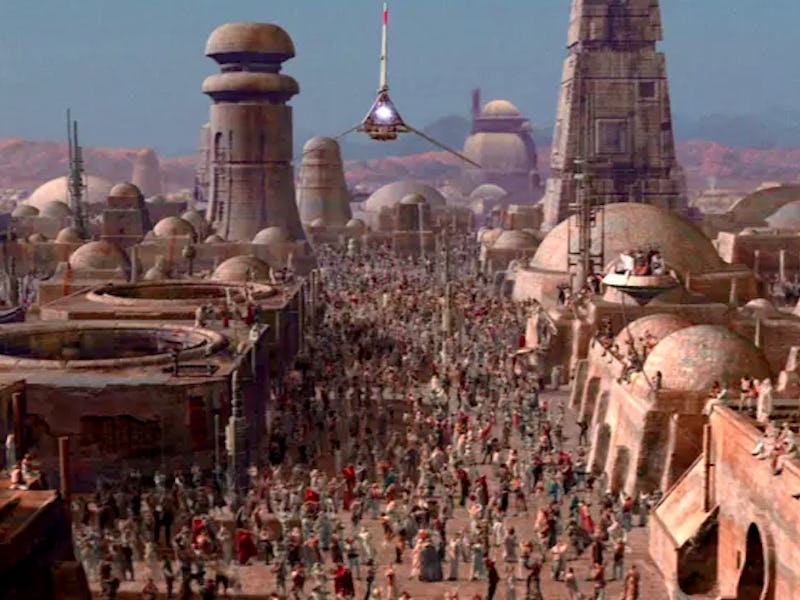
Luke Skywalker gazing off at the horizon with the setting of two suns in Star Wars is one of the most iconic images in cinema. As the world would soon learn in the next few decades, a real-life version of Tatooine is possible — binary star systems could very well develop planets — but scientists had yet to stumble upon a planet which was made up of more than just a massive swirl of gas. Life needs a solid rock to stand on, dammit!
So a recent discovery of a Tatooine-like star system 1,000 light-years away, reported in the journal Nature on Monday, is not much of a shocker, but it does raise hopes that the universe of Star Wars is not just limited to science fiction. The system, called SDSS 1557, is comprised of a white dwarf star and a brown dwarf star. A team of astronomers using the Gemini Observatory South telescope and the European Southern Observatory’s Very Large Telescope, both located in Chile, found a dense accretion of shattered asteroid remains orbiting the system.
It’s the first time asteroid debris and pollution has been observed around a binary star system. Although the likelihood of planets rocky planets currently residing in the region is very low, the results throw support to the notion of a binary star system possessing a rocky planet — perhaps even a potentially habitable one if conditions are right.
The first evidence of rocky planet formation in a Tatooine-like system has been found.
The birth of a planet around a star is a messy business. Basically, a star needs to possess enough of a gravitational pull to coalesce a disk of dust and gas around its orbit. After several million years, that dust and gas might settle into solid objects that we refer to as planets.
Up until now, scientists have only ever found binary stars with gas giant planets (like Jupiter and Saturn). The new findings don’t break that trend, but they are an encouraging sign that a rocky planet like Earth could form around a two-star system.
It should be emphasized, however, there aren’t currently planets forming around SDSS 1557. “In its current state the system is almost certainly uninhabitable,” Steven Parsons, an astronomer at the University of Sheffield and a coauthor of the study, tells Inverse. “Rather than planets forming, in this system they are being destroyed. What we see are the chunks of former asteroids and planets that have gotten too close to the central binary stars. Also, although we don’t detect it, there is likely to be at least one large Jupiter-like planet orbiting the binary farther out. It is the gravitational affect of this large planet that has flung these smaller rocky objects inward towards the stars.”
The white dwarf in this system is actually the corpse of a deceased star which passed away 33 million years ago. However, its former life is thought to be similar to the sun, so “there is certainly the possibility that life could have existed on the planets around the original system,” says Parsons.
“What’s really nice here,” he says, “is that we know that there were rocky objects around the original binary, not just big gas giant planets like those currently known around binary stars.”
The proto-planetary material forming around SDSS 1557 is pretty high in metallic content like silicon and magnesium, and seems to step from an asteroid which was about four kilometers in size. The sign of a formerly large asteroid suggests a solid planet may have once formed in the SDSS 1557 system.
Naturally, the next step to confirming the hype is to conduct follow-up studies, and the research group is planning to make new observations using NASA’s Hubble Space Telescope. Perhaps scientists can learn whether a long time ago, in a star system far away, a tiny Skywalker was sitting on the surface of a planet in the system, staring off at two suns setting in the distance.
Now to find out if there’s a Mos Eisley Cantina, too.